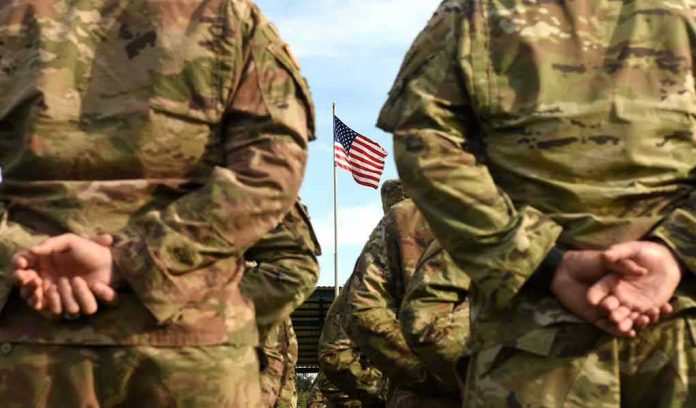
The Trump administration is considering a controversial plan to deploy a 600-soldier National Guard “Quick Reaction Force” capable of responding to civil unrest within one hour—a move that has sparked fierce opposition from governors and civil liberties advocates who warn it represents dangerous federal overreach.
Story Highlights
- Pentagon documents reveal plans for 600-troop domestic reaction force based in Alabama and Arizona
- Forces would deploy in 100-soldier waves within one hour to respond to protests or civil unrest
- State governors and mayors condemn plan as “unprecedented” federal overreach bypassing established procedures
- Internal Pentagon concerns cite hundreds of millions in costs and significant political risks
- Earliest implementation timeline set for fiscal year 2027 pending congressional approval
Rapid Response Force Structure Unveiled
Internal Pentagon documents detail a “Domestic Civil Disturbance Quick Reaction Force” comprising approximately 600 National Guard troops stationed at military bases in Alabama and Arizona. The force would deploy in waves of 100 soldiers with equipment including riot gear and military-style weapons. Personnel would serve 90-day rotations designed to limit burnout while maintaining readiness for nationwide deployment within one hour of activation.
Legal Framework Raises Constitutional Concerns
The proposed force would operate under Title 32 authority, which grants National Guard troops arrest powers during civil disturbances—the same legal framework used during 2020 protests. This approach allows federal control while bypassing stricter constraints of the Insurrection Act. Constitutional experts warn this precedent expands presidential discretion over domestic security matters traditionally handled by state and local authorities, potentially undermining federalism principles that protect local governance.
State Officials Sound Alarm Over Federal Overreach
Maryland Governor Wes Moore’s spokesman Carter Elliott condemned the administration’s approach, stating there are “well-established procedures to request additional assistance” that the Trump administration is “blatantly and dangerously ignoring.” Washington D.C. Mayor Muriel Bowser characterized recent National Guard deployments as “unsettling and unprecedented.” These officials argue the plan circumvents traditional state-federal cooperation protocols, representing a concerning shift toward centralized military control over local law enforcement matters.
Implementation Timeline and Budget Hurdles
Pentagon planners identified significant obstacles to implementation, including Guard availability constraints, logistical challenges, and costs potentially reaching hundreds of millions of dollars. Internal documents flag concerns about “Public and Political Impact” alongside operational feasibility. The earliest possible deployment would occur in fiscal year 2027, requiring congressional appropriations through standard Pentagon budget processes. This timeline suggests the controversial proposal remains years from reality, contingent on legislative approval and resolution of identified concerns.
Breaking news: The Trump administration is considering making a military “reaction force” for civil unrest that would have 600 troops remain on standby to deploy in as little as one hour, according to internal Pentagon documents reviewed by The Post. https://t.co/BGUm7J2sR0
— The Washington Post (@washingtonpost) August 12, 2025
The proposal represents a fundamental shift in how America responds to domestic unrest, prioritizing rapid federal intervention over traditional state-led crisis management. While supporters may argue such capabilities enhance public safety during emergencies, critics correctly identify threats to constitutional principles of limited federal power and local self-governance that have protected American communities for centuries.
Sources:
Trump Plans Military ‘Reaction Force’ to Use Against Americans – The New Republic
Trump team looking to create squad of 600 soldiers ready to deploy into US cities – The Independent
Trump Isn’t ‘Liberating’ D.C. He’s Subduing Home Rule – The Bulwark














